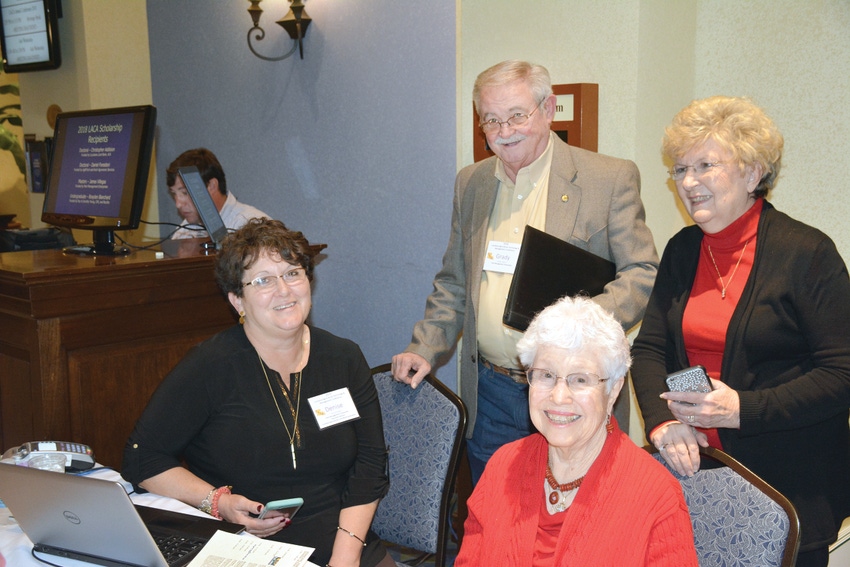
Grady Coburn remembers when a crop consultant was primarily hired to check for insect pests in cotton. “Cotton was the most complex crop grown in the South,” says Coburn, Pest Management Enterprises, Cheneyville, La.
“Cotton also had a complex set of pests,” he added in a Farm Press interview during the recent Louisiana Agricultural Technology and Management Conference in Marksvile, a conference sponsored by the Louisiana Agricultural Consultants Association.
“Back then, a lot of growers didn’t have the time or often the knowledge to scout for pests,” Coburn says. “They had a lot of pests to deal with.” In the 1960s and 1970s, cotton pest management included multiple sprays for boll weevils and numerous other insect pests, along with weeds and diseases.
“Growers saw the value of having their cotton scouted and began to add corn, soybeans, rice, and wheat. Now, crop consultants are multi-disciplined specialists serving all areas of production — pest management, fertility, plant growth regulators, weed control, and variety selection,” he says.
A crop consultant’s value has increased, Coburn adds, partly by necessity, taking on more responsibilities as Extension budgets were cut, spreading crop specialists across several parishes (or counties in other states) instead of serving one.
“I remember when every parish in the state had one county agent and one assistant county agent,” he says. “Now, with budget restraints, one agent or specialist covers multiple parishes.”
Coburn says the first crop consultants he knew of were working as early as the late 1940s in the Mid-South, which he believes is the birthplace of crop consultants.
Charter member
He says the Louisiana Agricultural Consultants Association started back in the mid 1970s. He’s a charter member and still an active member in the organization. “When we first started, we were just a small number of consultants who got together to talk about the problems in agriculture,” Coburn says.
The organization has grown to more than 60 voting, active members and about that many associate, non-voting, members. Attendance at the recent conference topped 225, says Executive Director Denise Wright.
Those early meetings were spartan affairs, recalls Coburn. “We didn’t have exhibitors,” he says. For the past few years the annual conference has included some 25 sponsors, set up in a ballroom of the Paragon Resort and Casino in Marksville. The conference agenda includes production and policy updates from LSU AgCenter scientists, as well as industry and government officials.
The conference is one way the industry keeps up with growing challenges facing agriculture. “Our biggest challenge is being able to keep abreast of technology,” Coburn says. “Irrigation technology, in particular, will be critical.”
He says agriculture’s objective of feeding some 9 billion people by 2050 will demand capitalizing on new technology, new methods and improved varieties. “And we will do it with less land and less water,” Coburn says. “Water is already an issue in many parts of the country — New Mexico and Texas, for instance. We have been fortunate in Louisiana with plentiful water resources and no rationing, but even here, we have to be more efficient with irrigation.”
Efficient irrigation
He says improved varieties that are more water efficient could be part of the solution. “And we have to work toward more efficient irrigation.”
Those are all aspects of crop production that agricultural consultants will help manage, Coburn says.
His company, Pest Management Enterprises, works with crop protection companies to test those new products, practices and varieties to find more efficient ways to produce food and fiber. “We work with multiple aspects of multiple crops,” he adds.
“We began as primarily a crop consultant company,” he says, “but have pulled in and now do contract research on company product lines.”
He says private research provides an important leg to a three-legged research and development stool. The company does in-house testing. Universities do further testing, and are important because they can recommend the products to growers.
And private research adds another level by supplying more data that they hope aligns with what companies and universities find.
“The EPA takes that three-pronged approach into account,” he says.
In addition to the state consultant association, Coburn is also a member of the National Association of Independent Crop Consultants. “We have a global organization, too, GAIAC,” he says.
That’s a pretty big leap from a few cotton scouts getting together occasionally to talk about problems in cotton.
About the Author(s)
You May Also Like






